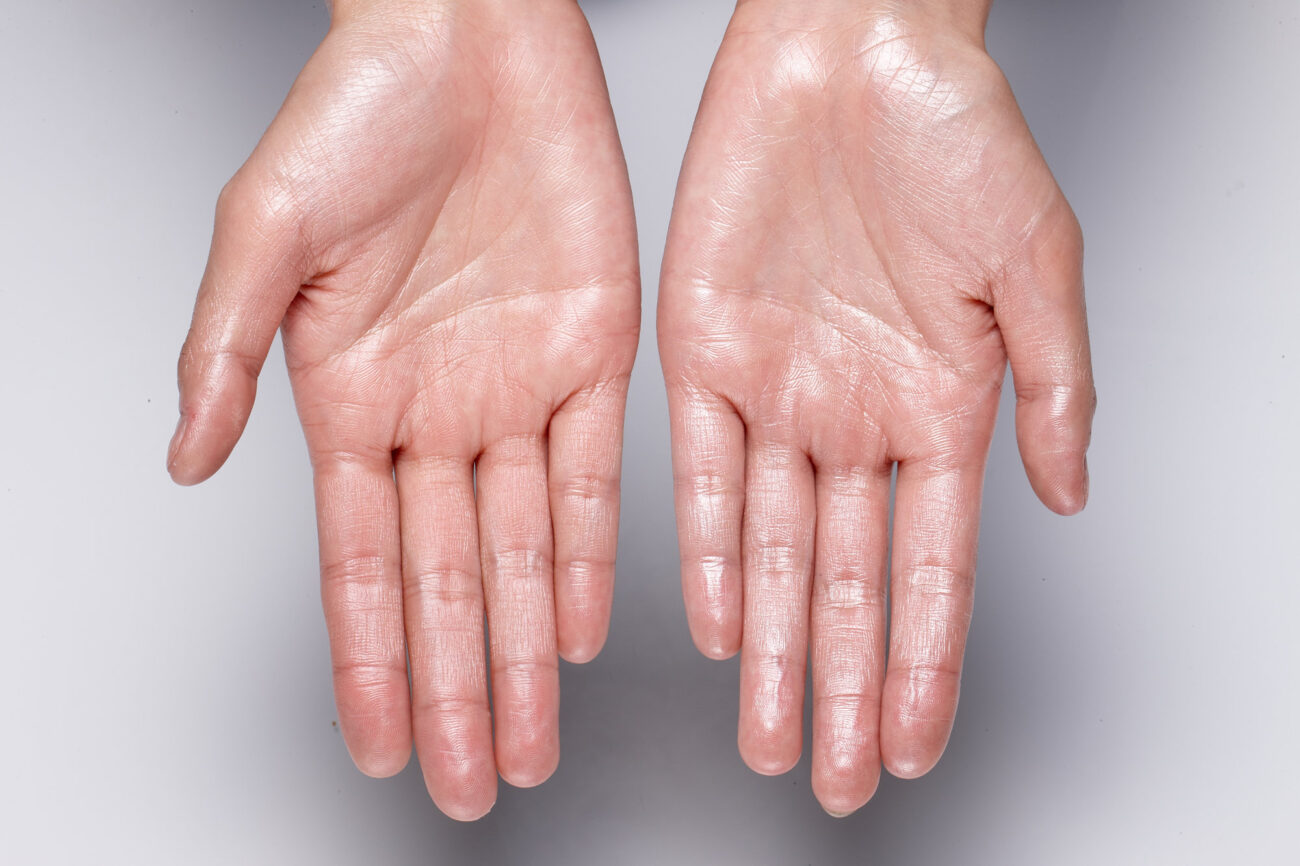What alternative treatment options are there for excessive sweating?
The treatment options for excessive sweating depends on where in the body the sweating occurs.
|
Underarms |
Hands |
Feet |
Face |
| Anti-sweat injections |
Y |
Y |
Y |
Y |
| Topical antiperspirants |
Y |
Y |
Y |
Y |
| Oral Medications |
Usually used if needing to treat whole body |
| Miradry |
Y |
|
|
|
| Iontophoresis |
|
Y |
Y |
|
| Surgery |
Y |
Y |
|
|
Topical Antiperspirants
Clinical strength aluminium containing antiperspirants are the first line treatment for hyperhidrosis and should be trialled before consideration is given to any other treatments. They are affordable and usually well tolerated. They should be applied at night to clean, dry skin.
The antiperspirant plugs the sweat gland and should signal your body to stop producing so much sweat.
Some people cannot tolerate antiperspirants due to skin irritation or a burning sensation. Some people will find they provide inadequate control of their sweating.
If clinical strength aluminium containing antiperspirants cannot be tolerated or fail to provide good sweat control, alternative treatments such as anti-sweat injections at Sweat Clinics Australia can be considered.
Oral Medications
Prescription medications such as anticholinergics can temporarily relieve sweating. These are usually considered when sweating involves the whole body.
The side effects can include dry mouth, dry eyes, blurry vision and cardiac affects. This significantly limits their use and they are not frequently prescribed.
Miradry
Miradry is a non-invasive procedure that uses microwave technology to target and destroy sweat glands in the underarms. It is long lasting and performed under local anaesthesia.
Side effects may include swelling, numbness and bruising in the underarm area for several days after treatment.
Cost is a barrier to many people in accessing this treatment. The cost of Miradry treatment is variable but generally between $2500- $3500. Sometimes a second treatment is required which may cost a further $1500- $2500.
Iontophoresis
Iontophoresis can be used for excessive sweating of the hands or feet. It is non-invasive and performed at home using a medical device that sends a low voltage current through water while the hands or feet are immersed. The electric current passes through the skins surface and shuts down the treated sweat glands temporarily.
It is very time consuming. Most people need 6-10 treatments before the sweat glands are shut down. A treatment session typically takes 20-40 minutes and is performed 2 or 3 times a week initially. Once sweating is improved ongoing maintenance treatments are needed. It can sometimes result in dry, irritated skin and discomfort during the treatment.
Surgery
Surgery is usually a last line option considered when other less invasive treatments have failed to provide relief from excessive sweating.
Surgical procedures include surgical removal of the sweat glands or thoracic sympathectomy.
Surgical removal of the sweat glands can be used to treat axillary hyperhidrosis. It can be performed under local anaesthetic. Risks include infection, pain, bruising, scarring and loss of feeling in the underarm.
Thoracic Sympathectomy involves cutting or clamping the sympathetic nerves in the thoracic region of the spine. It is usually used to treat palmar hyperhidrosis. This is a major surgical procedure requiring general anaesthetic. Serious side effects can occur including compensatory sweating, Horner’s syndrome (a rare complication affecting the eyes), pneumothorax (puncturing the lung) and infection.





